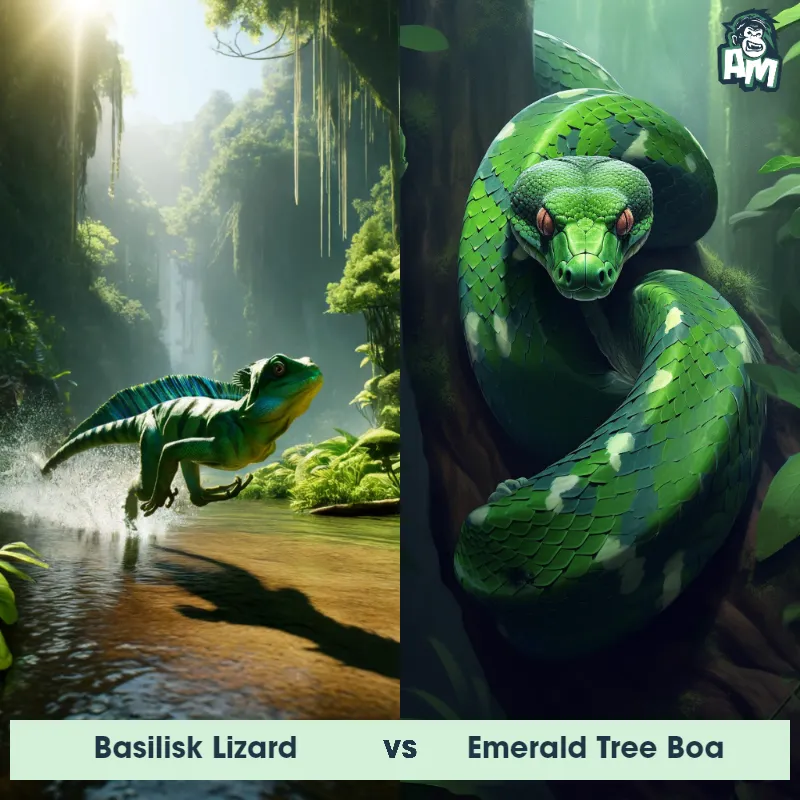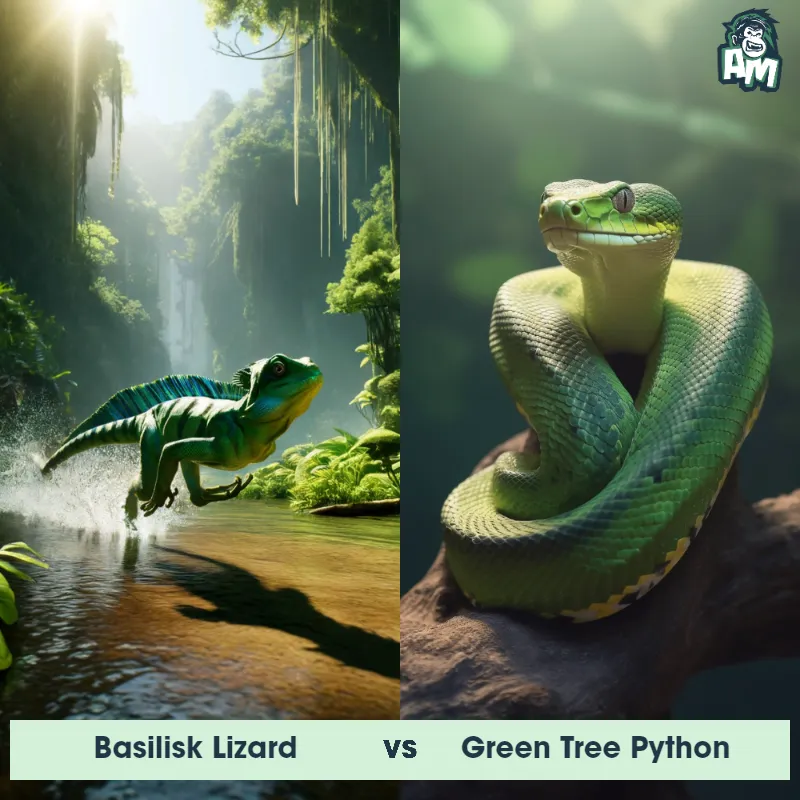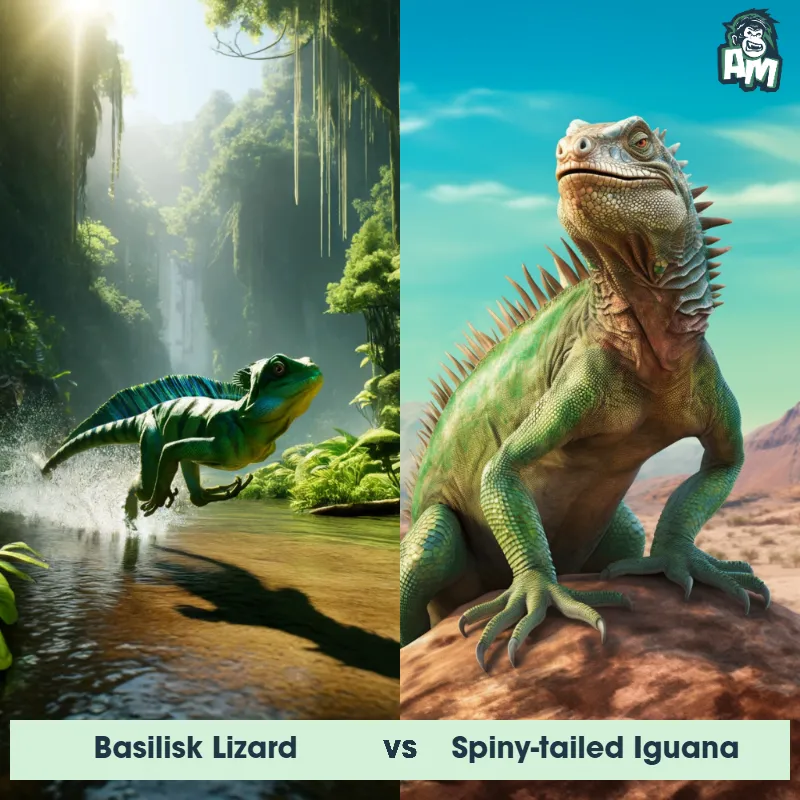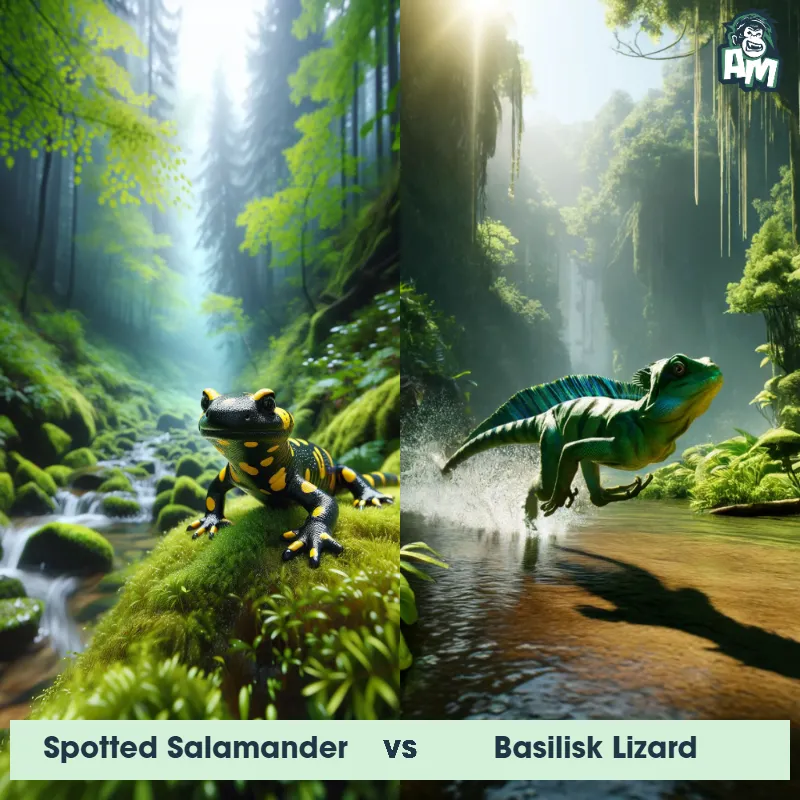The Basilisk Lizard
The Basilisk Lizard, also known as the Jesus Christ Lizard, is a fascinating reptile found in Central and South America. One of its most remarkable traits is its ability to run on water, hence the common name "Jesus Christ Lizard." It achieves this by using its long toes and fringed scales on its hind legs to create air pockets in the water, allowing it to stay buoyant while running. The Basilisk Lizard has a slender body, a long tail, and a crest on its head. It typically measures around 20 to 30 centimeters in length and ranges in color from green to brown, helping it blend into its surroundings. This arboreal lizard is well-adapted for life in the trees, with excellent vision and sharp claws that allow it to grip branches securely. Overall, the Basilisk Lizard is a fascinating creature known for its unique locomotion abilities and impressive agility.
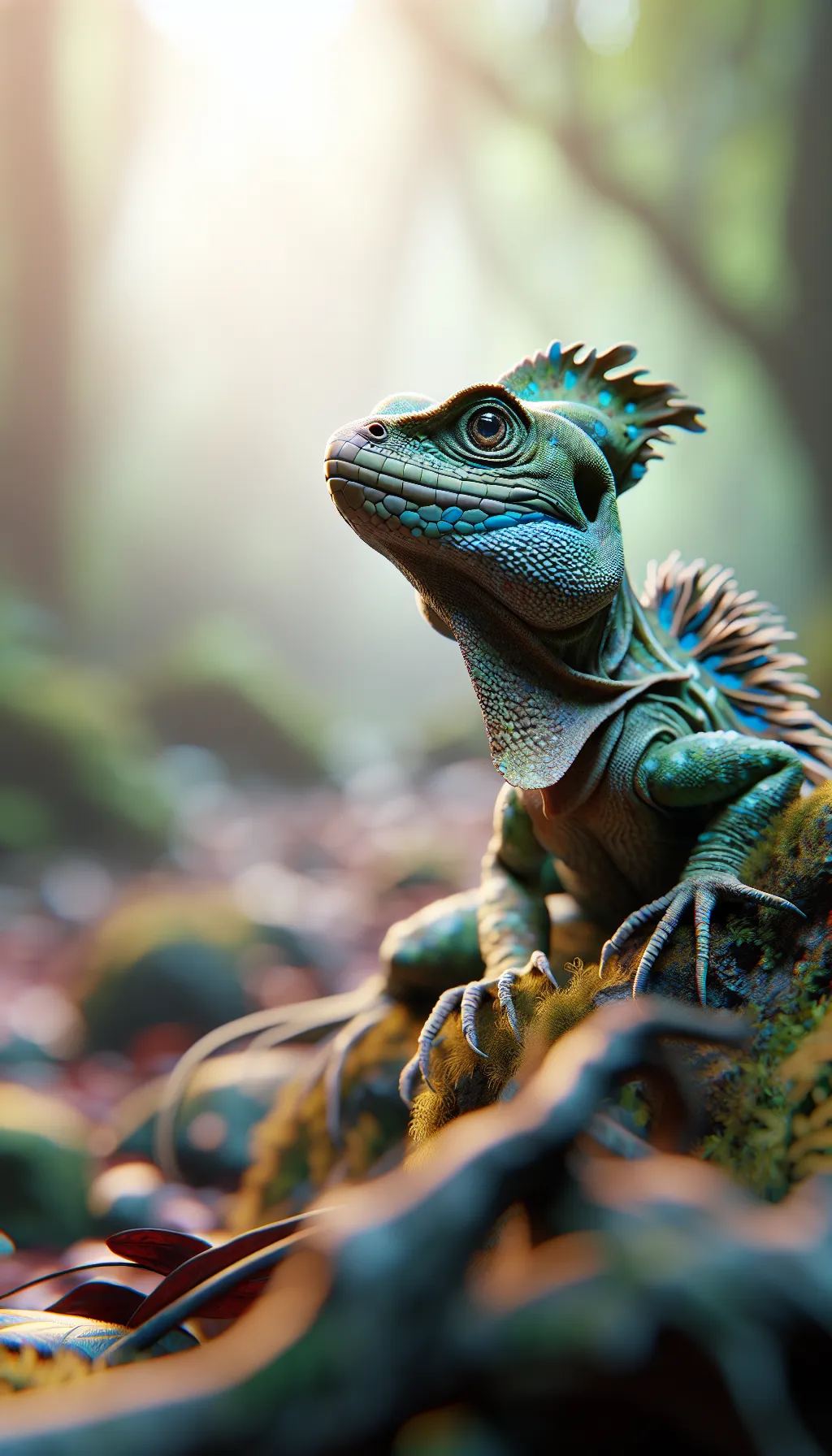
| Basilisk Lizard | |
|---|---|
| Size | Up to 70 cm (27.6 in) in length |
| Weight | Varies, typically around 200-300 grams (7-10.6 oz) |
| Speed | 7mph (11km/h) |
| Key Strength | Speed and agility |
| Biggest Weakness | Fragile body structure, lack of defensive capabilities |
| Scientific Name | Basiliscus basiliscus |
| Family | Corytophanidae |
| Habitat | Rainforests, rivers, and streams |
| Geography | Central and South America |
| Diet | Insects, small fish, invertebrates |
| Lifespan | 4 years - 6 years |

The Basilisk Lizard
The Basilisk Lizard, also known as the Jesus Christ Lizard, is a fascinating reptile found in Central and South America. One of its most remarkable traits is its ability to run on water, hence the common name "Jesus Christ Lizard." It achieves this by using its long toes and fringed scales on its hind legs to create air pockets in the water, allowing it to stay buoyant while running. The Basilisk Lizard has a slender body, a long tail, and a crest on its head. It typically measures around 20 to 30 centimeters in length and ranges in color from green to brown, helping it blend into its surroundings. This arboreal lizard is well-adapted for life in the trees, with excellent vision and sharp claws that allow it to grip branches securely. Overall, the Basilisk Lizard is a fascinating creature known for its unique locomotion abilities and impressive agility.
Fun Fact: The Basilisk Lizard can run on water for impressive distances of up to 20 meters, reaching a speed of about 9 kilometers per hour, thanks to its specialized hind legs and surface-tension techniques.
| Basilisk Lizard | |
|---|---|
| Size | Up to 70 cm (27.6 in) in length |
| Weight | Varies, typically around 200-300 grams (7-10.6 oz) |
| Speed | 7mph (11km/h) |
| Key Strength | Speed and agility |
| Biggest Weakness | Fragile body structure, lack of defensive capabilities |
| Scientific Name | Basiliscus basiliscus |
| Family | Corytophanidae |
| Habitat | Rainforests, rivers, and streams |
| Geography | Central and South America |
| Diet | Insects, small fish, invertebrates |
| Lifespan | 4 years - 6 years |
Basilisk Lizard Matchups
We use AI to simulate matchups between the Basilisk Lizard and other animals. Our simulation considers size, strength, and natural predatory behaviors to determine the most likely outcome.
Basilisk Lizard: Diet, Predators, Aggression, and Defensive Behaviors
What do Basilisk Lizards eat?
Basilisk lizards primarily eat insects like crickets, ants, and beetles. They may also consume small fish, crustaceans, and occasionally plant matter such as fruits and flowers.
Do Basilisk Lizards have any predators?
Basilisk lizards are preyed upon by birds of prey, snakes, and larger predatory mammals. As well as humans who hunt them for their colorful skin.
Are Basilisk Lizards aggressive?
Basilisk lizards are not inherently aggressive towards humans but may show aggression towards other lizards or animals during territorial disputes or mating season. They are known to display aggressive behavior towards potential threats or predators.
Do Basilisk Lizards fight?
Basilisk lizards may engage in physical combat with rivals during mating season or territorial disputes. They use their sharp claws and powerful legs to fight off competitors and defend their territory.
How do Basilisk Lizards defend themselves?
Basilisk lizards have a unique defense mechanism where they can run on water to escape predators. They can also use their powerful jaws and sharp teeth to bite if necessary. Additionally, they may puff up their body and display their colorful throat fan to intimidate predators.
What is Basilisk Lizards' biggest weakness in a fight?
Their biggest weakness in a fight is their small size and relatively fragile body structure. While they have strong legs for running and jumping, they can be easily injured by larger predators or rivals during physical combat. Additionally, their reliance on their speed and agility to escape may not always be enough to fend off aggressive attackers.
Fun Fact: When threatened, the Basilisk Lizard has an interesting defense mechanism where it rears up on its hind legs, opens its mouth wide, and hisses loudly to intimidate predators, revealing a bright red mouth lining.
Fun Fact: Unlike most lizards, the Basilisk Lizard is an efficient swimmer and diver, capable of staying submerged for up to 30 minutes. It uses its long tail as a rudder and its powerful legs to propel itself through the water, making it a versatile reptile both on land and in aquatic environments.



